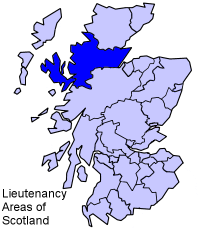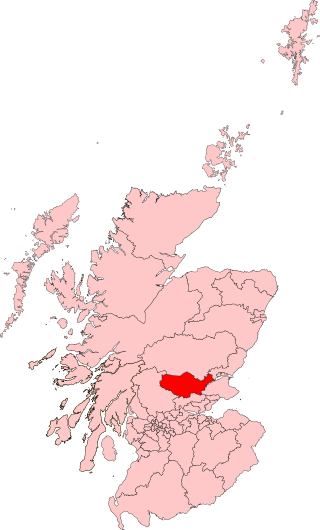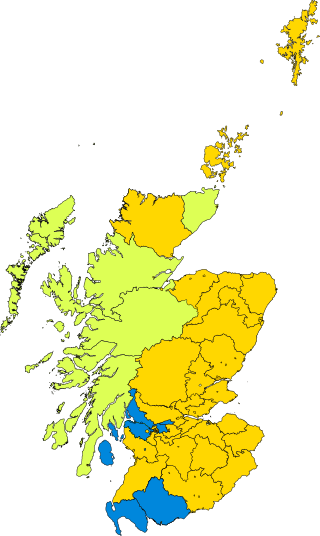Boundaries
The earlier Inverness-shire constituency covered, nominally, the county of Inverness minus the burgh of Inverness, which was a part of the Inverness Burghs constituency. By 1918, however, county boundaries were out of alignment with constituency boundaries.
In 1918, the Representation of the People Act 1918 created new constituency boundaries, taking account of new local government boundaries, and the new constituency boundaries were first used in the 1918 general election.
The new Inverness constituency included the burgh of Inverness and was one of three constituencies covering the county of Inverness and the county of Ross and Cromarty. The other two were the Ross and Cromarty constituency and the Western Isles constituency. [2]
The Inverness constituency covered the county of Inverness minus Outer Hebridean areas (the districts of Harris, North Uist and South Uist), which were covered by the Western Isles constituency. The same boundaries were used in every election from 1918 onwards.
In 1975, counties and burghs were abolished as local government areas, under the Local Government (Scotland) Act 1973, and from 1975 until 1983, the Inverness constituency was entirely within the Highland local government region.
For the 1983 general election, new boundaries defined three new constituencies to cover the region: Inverness, Nairn and Lochaber, Ross, Cromarty and Skye and Caithness and Sutherland. Each of the new constituencies covered a number of the districts of the region. The Caithness and Sutherland constituency carried forward the name of an older constituency.

Ross and Cromarty, also referred to as Ross-shire and Cromartyshire, is a variously defined area in the Highlands and Islands of Scotland. There is a registration county and a lieutenancy area in current use, the latter of which is 8,019 square kilometres in extent. Historically there has also been a constituency of the Parliament of the United Kingdom, a local government county, a district of the Highland local government region and a management area of the Highland Council. The local government county is now divided between two local government areas: the Highland area and Na h-Eileanan Siar. Ross and Cromarty border Sutherland to the north and Inverness-shire to the south.

Caithness and Sutherland was a county constituency of the House of Commons of the Parliament of the United Kingdom from 1918 to 1997. It elected one Member of Parliament (MP) by the first past the post system of election.

Aberdeen South is a burgh constituency of the House of Commons of the Parliament of the United Kingdom and it elects one Member of Parliament (MP) by the first-past-the-post system of election.
Sutherland was a Scottish constituency of the House of Commons of the Parliament of Great Britain from 1708 to 1801 and of the Parliament of the United Kingdom from 1801 to 1918.
Edinburghshire was a Scottish county constituency of the House of Commons of the Parliament of Great Britain from 1708 to 1801 and of the Parliament of the United Kingdom from 1801 to 1918.
Ross and Cromarty was a county constituency of the House of Commons of the UK Parliament from 1832 to 1983. It elected one Member of Parliament (MP) using the first-past-the-post voting system.

Dumfriesshire was a county constituency represented in the House of Commons of Great Britain from 1708 to 1801 and in the House of Commons of the Parliament of the United Kingdom from 1801 until 2005. It was known as Dumfries from 1950.
Inverness Burghs was a district of burghs constituency of the House of Commons of the Parliament of Great Britain from 1708 to 1801 and of the Parliament of the United Kingdom from 1801 to 1918. It elected one Member of Parliament (MP).
Inverness-shire was a county constituency of the House of Commons of the Parliament of Great Britain from 1708 to 1801 and of the Parliament of the United Kingdom from 1801 until 1918.
Dunbartonshire was a county constituency of the House of Commons of Great Britain from 1708 to 1801 and of the House of Commons of the Parliament of the United Kingdom from 1801 to 1950.
Kinross and Western Perthshire was a county constituency of the House of Commons of the Parliament of the United Kingdom from 1918 until 1983, representing, at any one time, a seat for one Member of Parliament (MP), elected by the first past the post system of election.

Perth was a constituency of the House of Commons of the Parliament of the United Kingdom from 1832 to 1918, 1918 to 1950, and 1997 to 2005. From 1832 to 1918 it was a burgh constituency. From 1918 to 1950, and 1997 to 2005, it was a county constituency. During each of the three periods it elected one Member of Parliament (MP).
Caithness was a county constituency of the House of Commons of the Parliament of Great Britain from 1708 to 1801 and of the Parliament of the United Kingdom from 1801 to 1918.
Buteshire was a county constituency of the House of Commons of the Parliament of Great Britain from 1708 to 1801 and of the Parliament of the United Kingdom from 1801 to 1918.
Aberdeen and Kincardine Central, also known as Central Aberdeenshire, was a county constituency of the House of Commons of the Parliament of the United Kingdom from 1918 until 1950. It elected one Member of Parliament (MP) by the first past the post system of election.
Inverness, Nairn and Lochaber was a county constituency of the House of Commons of the Parliament of the United Kingdom from 1983 to 1997. It elected one Member of Parliament (MP) by the first-past-the-post system of election.
West Stirlingshire was a county constituency of the House of Commons of the Parliament of the United Kingdom, to which it elected one Member of Parliament (MP) by the first past the post electoral system.
Wick Burghs, sometimes known as Northern Burghs, was a constituency of the House of Commons of the Parliament of the United Kingdom from 1832 to 1918. It elected one Member of Parliament (MP) by the first past the post voting system.

The Crofters' Party was the parliamentary arm of the Highland Land League. It managed to elect five MPs in the 1885 general election and a sixth the following year.
Kilmarnock was a county constituency of the House of Commons of the Parliament of the United Kingdom from 1918 to 1983. It elected one Member of Parliament (MP) by the first past the post system of election.
This page is based on this
Wikipedia article Text is available under the
CC BY-SA 4.0 license; additional terms may apply.
Images, videos and audio are available under their respective licenses.







